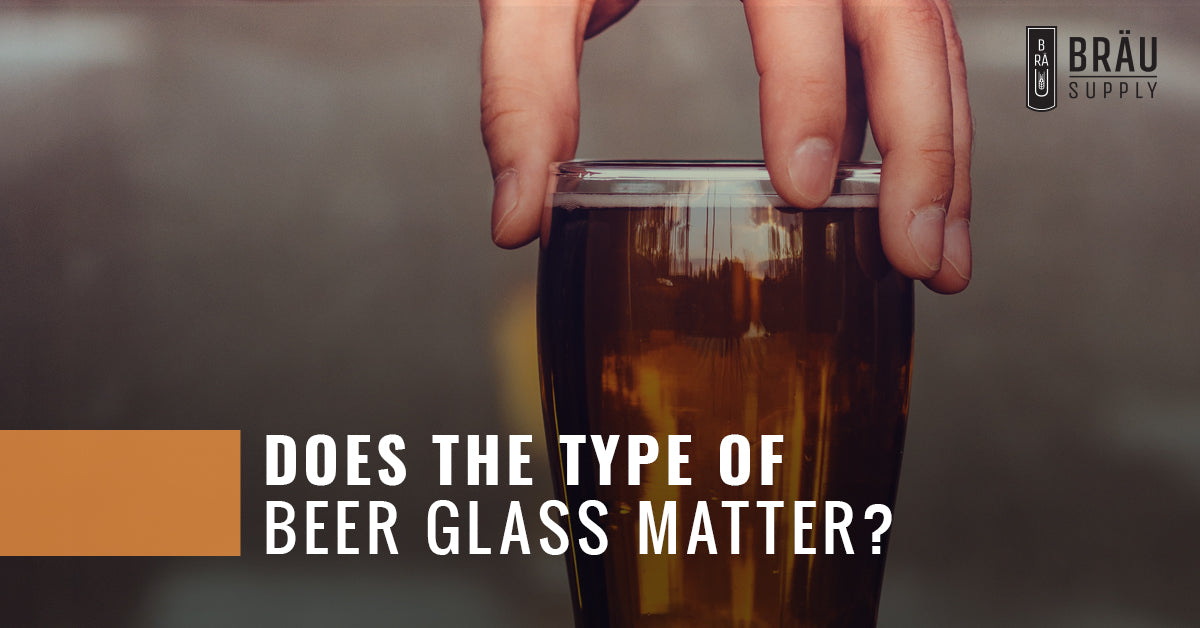Boxing weekend sale! Save up to $700! Shop now Our products ship tariff free

Does The Type Of Beer Glass Matter?
July 11, 2018 3 min read

After spending a certain amount of time around fellow homebrewers, ale aficionados, and beer snobs, you’ve likely heard someone discuss the importance of the glass that you’re serving your beer in. A friend might recoil from you offering your new homebrew in a red plastic cup, and perhaps, rightfully so. But does the type of beer glass really make a difference in the way your beer tastes and smell?
Aroma
A quick trip to a craft brewer or specialty tap room will reveal a wide variety of glasses in all sorts of shapes and sizes. Glasses that are wider at the base, taper in the middle, and then flare out at the top are referred to as tulip glasses. These glasses are designed to emphasize the aroma of the beer. The opening of the glass is smaller to keep the beer from aerating as fast as a regular pint glass. This allows the beer’s head to open up and lets you really enjoy the smell of the beer, as the frothy head is where the beer’s smell is the strongest.
Appearance
Some beers are known for the way they look, and naturally, some glasses are tailored to enhance that appearance. Unfiltered wheat beers are known for their hazy character, so a wheat beer glass is often narrower at the bottom, and widens toward the top, allowing the cloudy appearance of the beer to be featured prominently, while its notable foamy head is highlighted by the wider rim. Other beers, like a pilsner, are poured into a tall thin glass that shows off its clean, clear appearance. Because the glass is so long, the beer pours longer, creating an even, light head at the top of the glass.
Taste
There’s debate in the brewing community as to whether the type of glass affects the taste of the beer. While some swear that some glasses are designed to enhance the flavor of a beer, they might mean that it allows the aromas to be more focused, which might influence the way they taste the beer. Others say that the only reason the glass affects the taste is that the glass is clean and removes the metallic taste of an aluminum can or keg.
A Clean Glass Is Best
After our analysis, let’s set a standard. If you’ve brought home a six-pack from the store or are cracking open a few bottles of homebrew, we can all agree that pouring your beer out of its bottle or can and into a glass is the best way to fully enjoy the color, head, and aroma of the beer. The type of glass matters less than the fact that you’re just using a glass of any kind. Make sure that your glasses, be they tulips, pints, tumblers, or snifters, are clean and free of any chipping. For an added “wow factor,” you can keep them slightly chilled, ensuring that your beer stays colder longer.
Naturally, before you select a glass to serve your beer in, you need beer to serve! The UniBräu all-in-one small batch brewing system allows you to brew up to six gallons of beer at one time, in one vessel. You’ll save time and effort using our system, made from high-quality parts that would look at home in your favorite craft brewery. Stop by Bräu Supply now!
More articles how to brew beer
The ultimate guide to Kveik yeast: Unleashing it's fermentation potential
Revolutionizing home brewing: The simplified art of no sparge brewing
Exploring amber ales: A guide with a twist on the traditional recipe
Mastering cold crashing: Enhancing beer clarity and accelerating the aging process
What is the basic function of the fermenter?
What causes a fermenter to heat up?
The art of lagering: A guide to perfecting the cold conditioning process
Troubleshooting fermentation problems in brewing: A comprehensive guide
Subscribe
Sign up to get the latest on sales, new releases and more …


